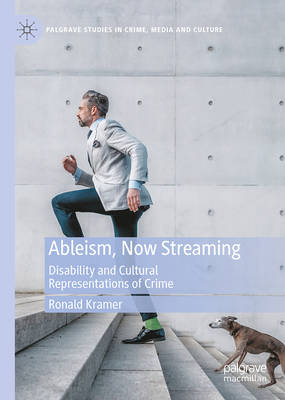
- Afhalen na 1 uur in een winkel met voorraad
- Gratis thuislevering in België vanaf € 30
- Ruim aanbod met 7 miljoen producten
- Afhalen na 1 uur in een winkel met voorraad
- Gratis thuislevering in België vanaf € 30
- Ruim aanbod met 7 miljoen producten
Zoeken
€ 183,45
+ 366 punten
Omschrijving
This book reveals how ableism permeates cultural portrayals of crime. What does it mean to consume crime narratives that are so thoroughly ableist? While there are many interpretations of crime in media, there is not yet a sustained analysis of its ableist underpinnings and the social and cultural significance of its seemingly endless consumption. Using a range of texts as illustrative material, each chapter explores a strand of the ableist imaginary, how it underpins crime narrativization, and how it is normalized via our consumption. This book argues that the portrayal of crime constitutes a major site for the articulation and defense of ableist thinking. As such, it is a cultural practice replete with symbolic, social and political effects that hamper the lives of disabled people while securing the privileges appended to bodyminds that pass as "normal." Drawing on radical constructivist logic, this book speaks to those interested in representations of crime and contributes to the emerging subfield of crip criminology.
Specificaties
Betrokkenen
- Auteur(s):
- Uitgeverij:
Inhoud
- Taal:
- Engels
- Reeks:
Eigenschappen
- Productcode (EAN):
- 9783032136787
- Verschijningsdatum:
- 4/02/2026
- Uitvoering:
- Hardcover
- Formaat:
- Genaaid
- Afmetingen:
- 148 mm x 210 mm

Alleen bij Standaard Boekhandel
+ 366 punten op je klantenkaart van Standaard Boekhandel
Beoordelingen
We publiceren alleen reviews die voldoen aan de voorwaarden voor reviews. Bekijk onze voorwaarden voor reviews.








